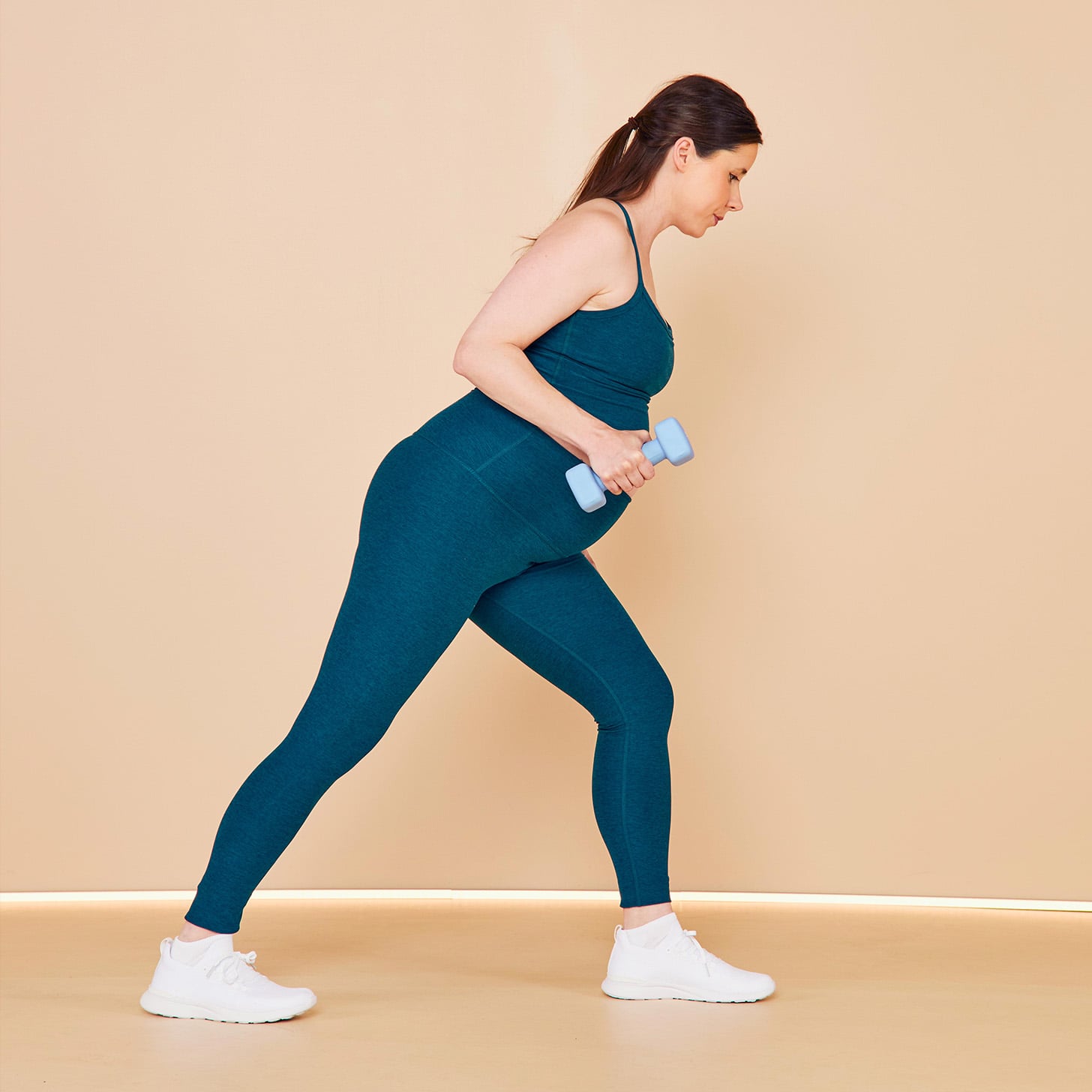You’re bringing sexy back . . . muscles that is. The back is a very large and complex muscle group, so building it up takes time, and intentional work. One of the moves that hits many of the major muscle groups in your back is the bent-over row.
“The bent-over row is a full-body compound movement that targets the upper back, biceps, and even the core and hamstrings by supporting the hinge position. The primary muscle groups are the lats, mid-traps, biceps and rear-delts”, says Dylan Davies, CPT and CEO of Lift Society in Los Angeles California.
So why does all that matter? We fill you in on the benefits of the bent-over row ahead — and break down exactly how to do one, plus some useful modifications and variations.
What Muscles Do Bent-Over Rows Work
The bent-over row is an exercise that will target and strengthen the posterior chain (the muscles along the back of your body). All of these muscles are important for posture, creating full body balance, and supporting your spine, which helps to prevent injuries while lifting, twisting, or otherwise going about your daily movements (like bringing in all of the groceries in one trip. Score!).
“By practicing and progressively overloading the bent-over row, you’ll notice your back getting stronger, improved posture, and muscle definition throughout your biceps, rear delts, lats and mid-traps,” Davies tells PS.
She continues, “Because bent-over rows are a compound movement, meaning you’re recruiting a lot of muscle groups to perform the exercise, you can also improve your core strength and hip-hinge patterns.”
How To Do Bent-Over Rows

- Start with your feet hip width apart, holding a dumbbell in each hand.
- Slightly bend your knees and hinge your hips back until your body is almost parallel to the floor.
- Keep your gaze down and your chin slightly tucked (as if you were holding a grapefruit under your chin) to keep a neutral spine.
- Squeeze your shoulder blades together to activate the movement, while simultaneously bending at the elbows.
- Bring the dumbbells up to your midsection or to where your range of motion allows.
- Release the arms and repeat until all reps are complete.
Bent-Over Row Modifications
“If a loaded hinge position doesn’t feel great for your body, you could modify the exercise”, suggests Davies. Making slight changes to the exercises will allow you to work with any injuries or discomfort you may feel while performing the bent-over row.
Yates Row
The Yates row is done with a barbell instead of dumbbells and requires less of a hinge.
- Start in the same position as a standard bent-over row, but keep your chest at about a 45 degree angle, instead of lowering toward parallel.
- As you row, the bar path will go from above the knee to the hip crease. This adjustment in the angle will help to keep weight out of the low back.
Chest-Supported Dumbbell Row
For this modification you will use a bench in the incline position. The support from the bench will remove the hinge from the movement, while allowing you to perform it with good form.
- Straddle the bench, and lay your chest against it.
- Squeeze through your back and bend your elbows, bringing the weights up to your chest. Then return to the starting position.
Single Arm Row

The single arm row can be done standing, or using a bench.
- To do a standing single arm row, you will do the move exactly like the bent-over row, but using only one arm at a time.
- To use a bench, you will place your right hand and knee on the bench, creating a flat back. From there bend your left elbow and pull the dumbbell to your hip, then return to the starting position.
Bent-Over Row Variations
One of the best ways to create variation to a movement is to play with tempo and supersets. “To level up a bent-over row you could add more weight, add more reps, or perform an agonist superset by alternating the movement with a lat pull down or dumbbell back fly to hit the same muscle groups from different angles,” Davies tells PS. “You could also use time under tension and add a three-second pause at the top of each rep, or take a slow negative on the lowering phase of each rep.” Here, two combo moves to add a little extra oomph to your row.
Renegade Row

The Renegade row is a move that will not only target your back, but will also really light up the core.
- To perform this exercise, start in the plank position with a weight in or by each hand.
- From here, bend your right elbow, bringing the dumbbell up to your hip and trying to keep your hips steady, avoiding rocking. Then, release the dumbbell back to the ground.
- Next, repeat the same thing with the left arm, and alternate until all reps are complete.
Deadlift With Row
To make a bent-over row more of a compound movement, you can add a deadlift.
- Perform a standard bent-over row. The only difference is that instead of completing all reps in the hinge position, you will complete one row, then return back to standing before hinging forward and completing the next row.
Brittany Hammond is a NASM-certified fitness instructor, a fitness writer, and an avid reader. In addition to POPSUGAR, she has contributed to Livestrong.com, Well+Good, Verywell Fit, and Health.com. She has worked as a group fitness coach for the past seven years.
Image Source: POPSUGAR Photography | Chaunté Vaughn
